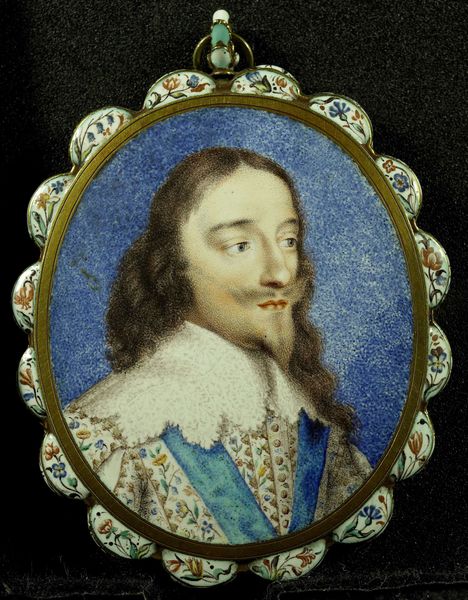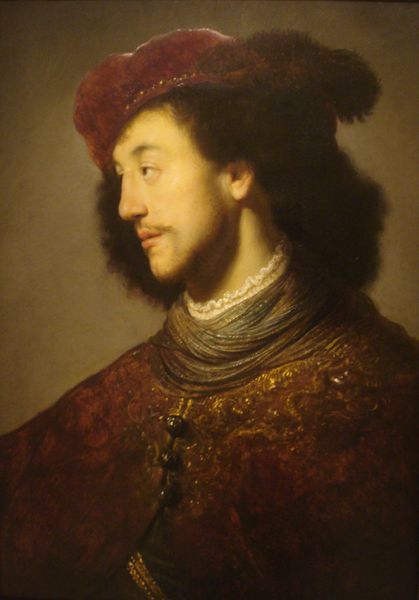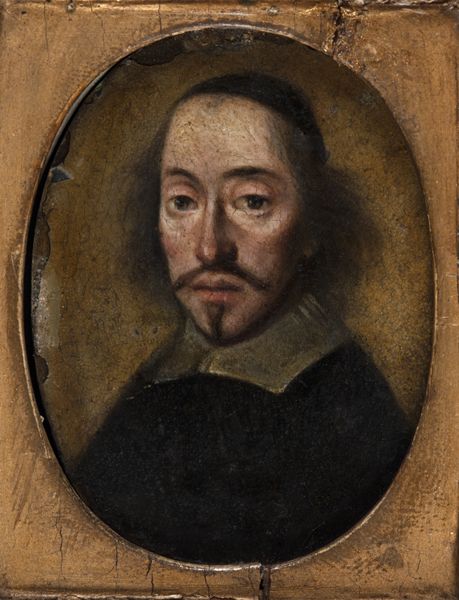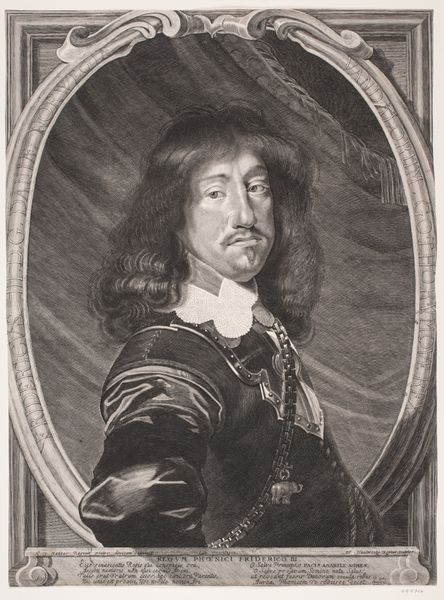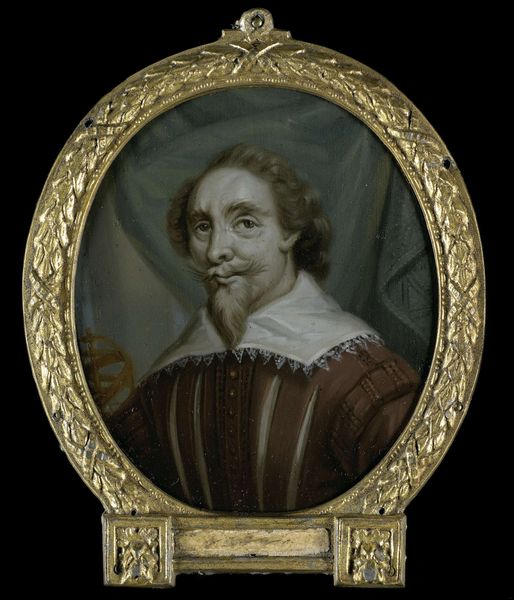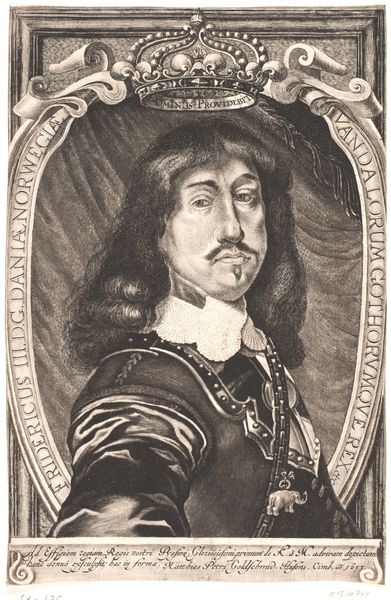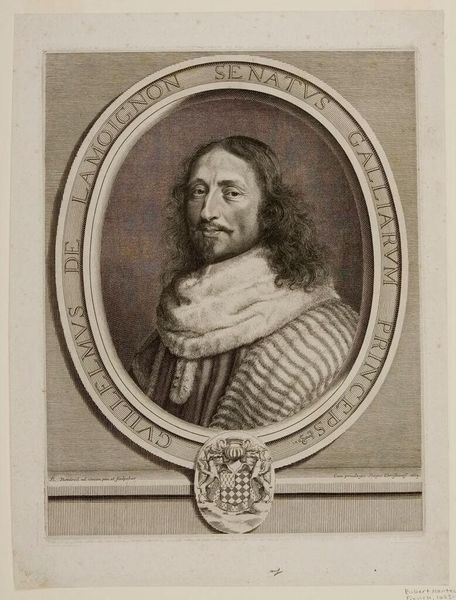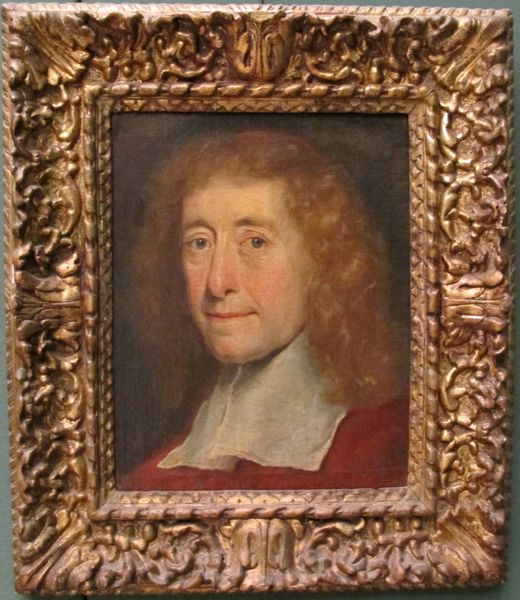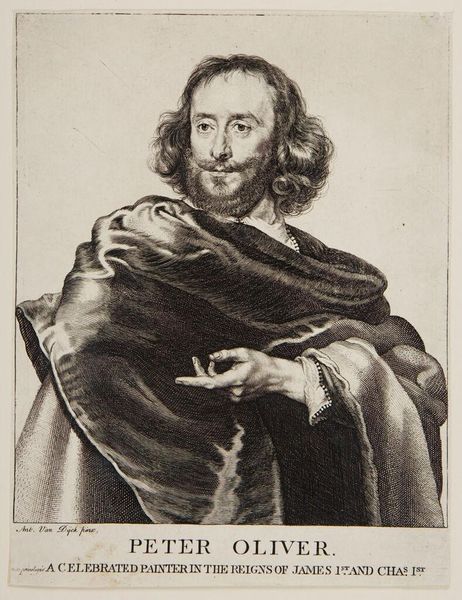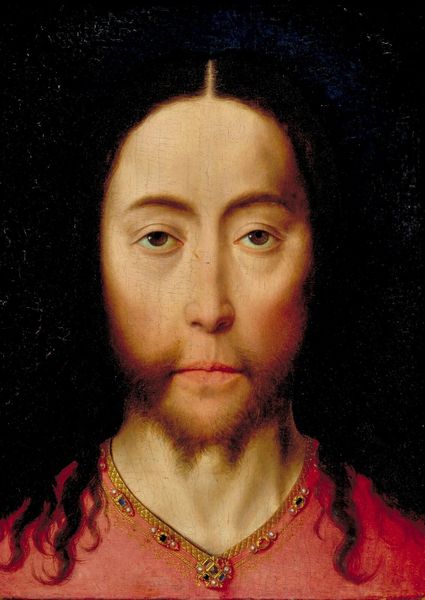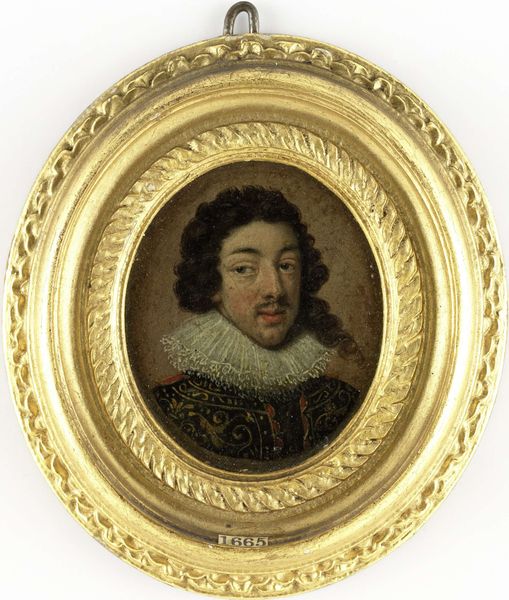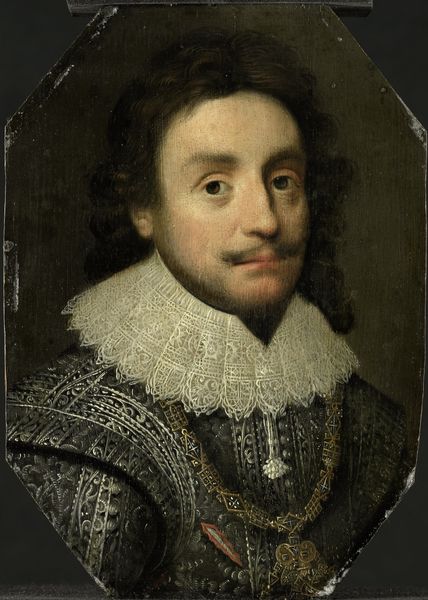
oil-paint
#
portrait
#
self-portrait
#
baroque
#
oil-paint
#
oil painting
Copyright: Public domain
Editor: Here we have Isaac Fuller's self-portrait from 1670, crafted in oil paint. It's quite striking; the oval frame emphasizes the artist’s gaze. What compositional elements stand out to you? Curator: Formally, the portrait employs a sophisticated contrast between the textures: the softness of the sitter's hair against the almost metallic sheen of the frame. Observe the arrangement of light, strategically placed to sculpt the forms. The fall of light is very Baroque, reminiscent of similar pieces by Rembrandt or Rubens. The shadow obscures some detail but also shapes the volumes in three dimensions. Does this light help make your reading of this artwork? Editor: I didn't consider the distribution of light until now. What could that strong directional lighting suggest? Curator: That might highlight Fuller's dramatic Baroque style but I wonder if he strategically places our attention? His face appears to be centered, whereas the other portions fall back a bit into obscurity. The dark background draws the viewer's attention almost entirely to the face, especially the eyes, allowing an introspective reading. Editor: Ah, I see. So the light is less about representing external illumination and more about directing our internal observation. Curator: Precisely. It invites contemplation of not only the physical representation but, arguably, the persona that Fuller wishes to convey through meticulous composition. Editor: That’s insightful. It changes how I see the portrait; it’s not just a face, but a structured narrative revealed through the use of form, light and compositional order. Thank you. Curator: My pleasure.
Comments
No comments
Be the first to comment and join the conversation on the ultimate creative platform.
